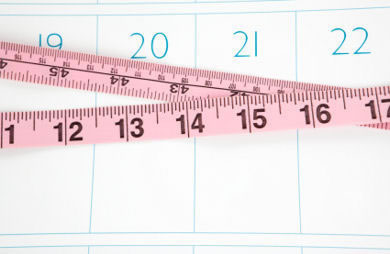What is Anaerobic Exercise?
While "aerobic" means "with oxygen," anaerobic means "without air" or "without oxygen." Anaerobic exercise is short-lasting, high-intensity activity, where your body’s demand for oxygen exceeds the oxygen supply available. Anaerobic exercise relies on energy sources that are stored in the muscles and, unlike aerobic exercise, is not dependent on oxygen from (breathing) the air. Examples of anaerobic exercise include: heavy
Anaerobic exercise uses your muscles at a high intensity for a short period of time. As a result, it can help:
- Develop stronger muscles
- Improve your VO2 max (the highest amount of oxygen one can consume during exercise) and thus improve your cardio-respiratory fitness
- Increase your capacity to withstand the buildup of waste substances (such as lactic acid) and remove them from the body. This means your endurance and ability to fight fatigue will improve.
How Does Anaerobic Exercise Work?
When you begin to work out vigorously, there is a temporary shortage of oxygen being delivered to the working muscles. Lactic acid is a by-product of producing energy anaerobically. When lactic acid accumulates at high levels in the blood, it causes muscular fatigue. This is why anaerobic exercises cannot last very long.
But with training, the body becomes better equipped to handle lactic acid. Several efficient changes occur that result in decreased production of lactic acid and increased removal of it from the bloodstream. The body also produces "buffers" that delay the onset of fatigue during anaerobic exercise. Studies have shown that with anaerobic training, the muscle’s buffering capacity is increased by 12 to 50 percent. With this increased buffering capacity, more lactic acid can accumulate during high intensity exercise without causing fatigue.
How to Add Anaerobic Training to Your Program
Anaerobic interval training is primarily reserved for those who are very fit and desire to increase
Interval training is a great way to incorporate anaerobic exercise. It can be done with many types of exercise (for example, running, biking, or swimming). An interval is done by increasing your pace for a short period of time (for example, between 10 to 60 seconds), then having a slow recovery period that is at least three times as long as the interval.
- If you are new to exercise, do not immediately start with
high-intensity activity like anaerobic exercise. Beginners should start with lower-intensity aerobic exercise for several weeks to build a base level of fitness. - Always check with your doctor before adding anaerobic exercise to your fitness program.
- Anaerobic exercise is not recommended if you are pregnant.
- Always warm up before starting any anaerobic exercise, and cool down for five to 10 minutes after your workout session.












.png)
